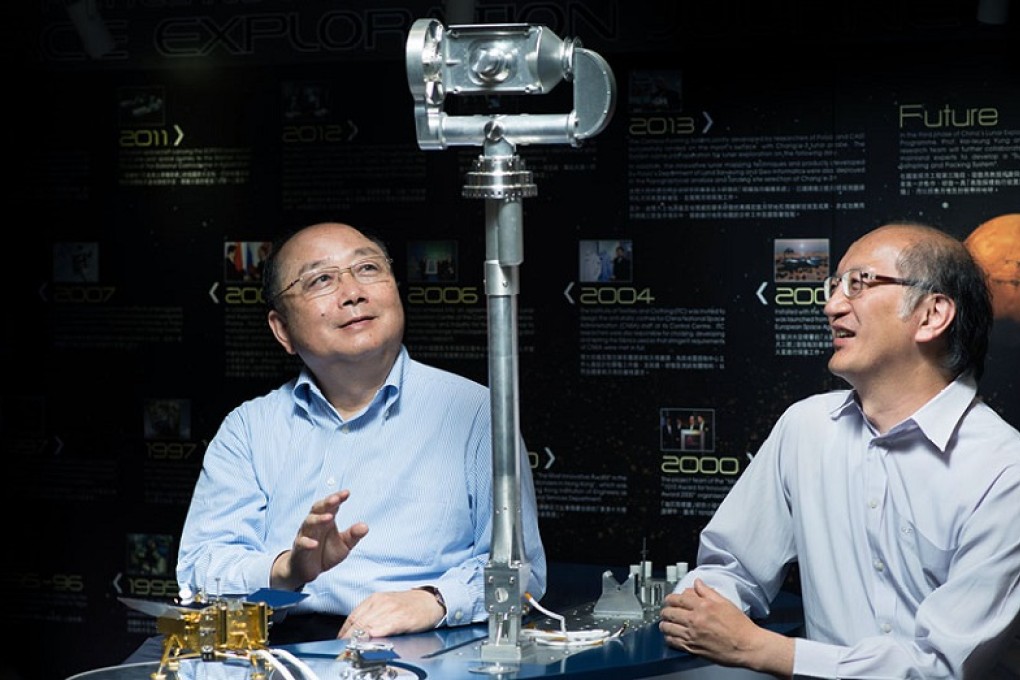Camera pointing system for moon exploration
At 1:11pm on the afternoon of 14 December 2013, Chang’e-3 touched down gently on the surface of the moon at Sinus Iridum, the “Bay of Rainbows”.

[Sponsored Article] "I hope our participation in the nation’s space mission can arouse young people's interest in science."
At 1:11pm on the afternoon of 14 December 2013, Chang’e-3 touched down gently on the surface of the moon at Sinus Iridum, the “Bay of Rainbows”.
The landing was smooth and without incident, as evidenced by the clear images that came beaming back to Beijing from the camera pointing system that sat securely on top of the lunar lander.
This great achievement was a first for China and also for the team of scientists from The Hong Kong Polytechnic University who developed and built the tiny 85cm long camera pointing system — the first such instrument made in Hong Kong for China’s lunar exploration programme.
The team was led by Prof. Yung Kai-leung, Associate Head of the Department of Industrial and Systems Engineering. Tasked with developing the camera pointing system by the China Academy of Space Technology, he and his colleagues faced a number of daunting challenges. Among these was the choice of materials that would be used in the system, which had to withstand the stresses of the lunar environment.
“We used a number of avionic materials because we had to consider the combination of materials in terms of the coefficient of thermal expansion as well as strength,” said Prof. Yung.
The selection of lubricants was also critical, as the system had to be able to move up and down 120 degrees and swivel 350 degrees from side to side in extreme temperatures and in one-sixth of Earth’s gravity. According to Prof. Yung, “many materials do not behave the same way as on Earth with respect to the friction between them.”
The success of this mission has paved the way for PolyU to participate in China’s future lunar exploration programme, including the development of a surface sampling and packing system.
Prof. Yung also hopes his team’s successes will inspire the younger generation. “I hope our participation in the nation’s space mission can arouse young people’s interest in science,” he said. “Be ambitious. Follow your dreams.”